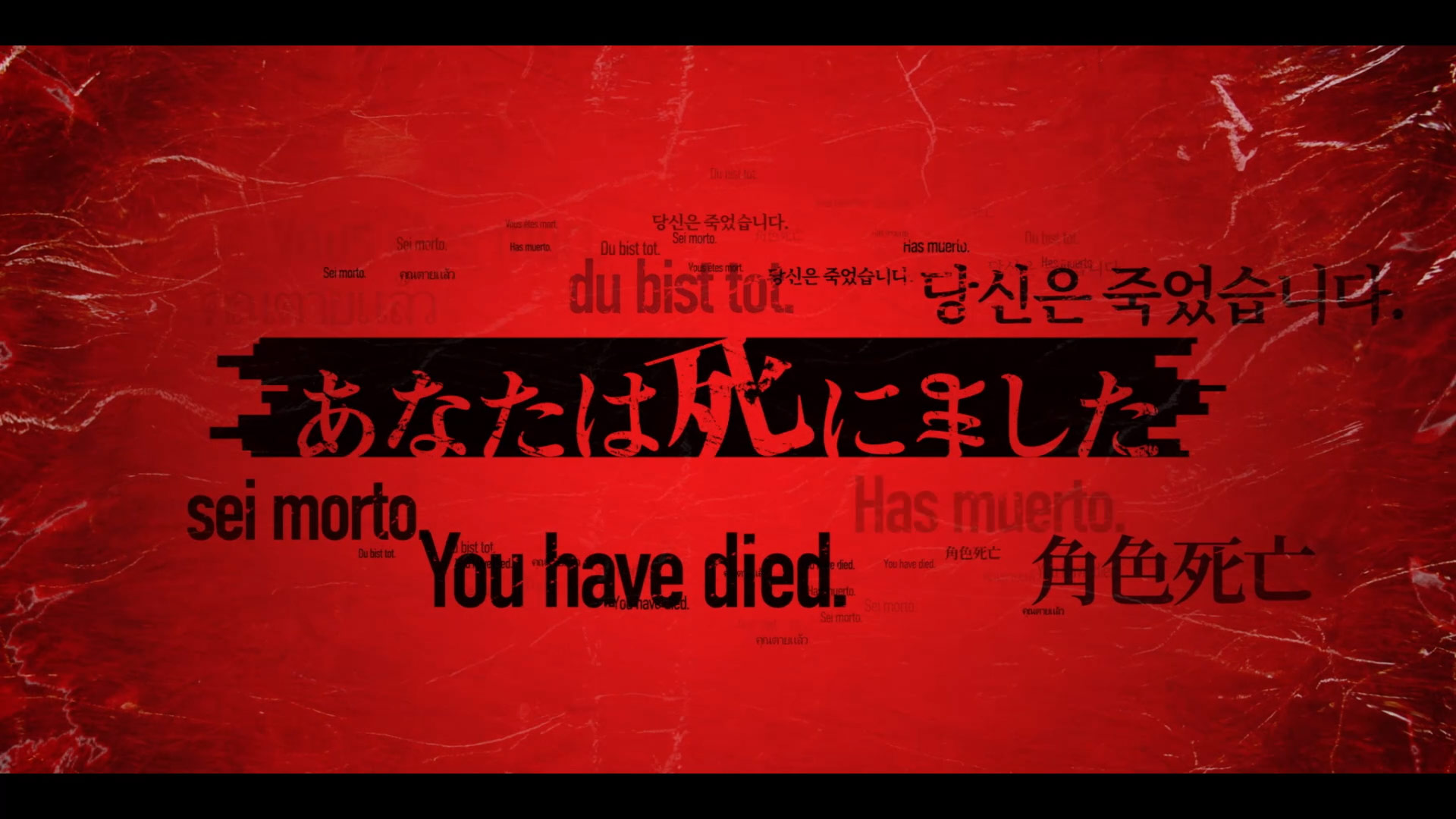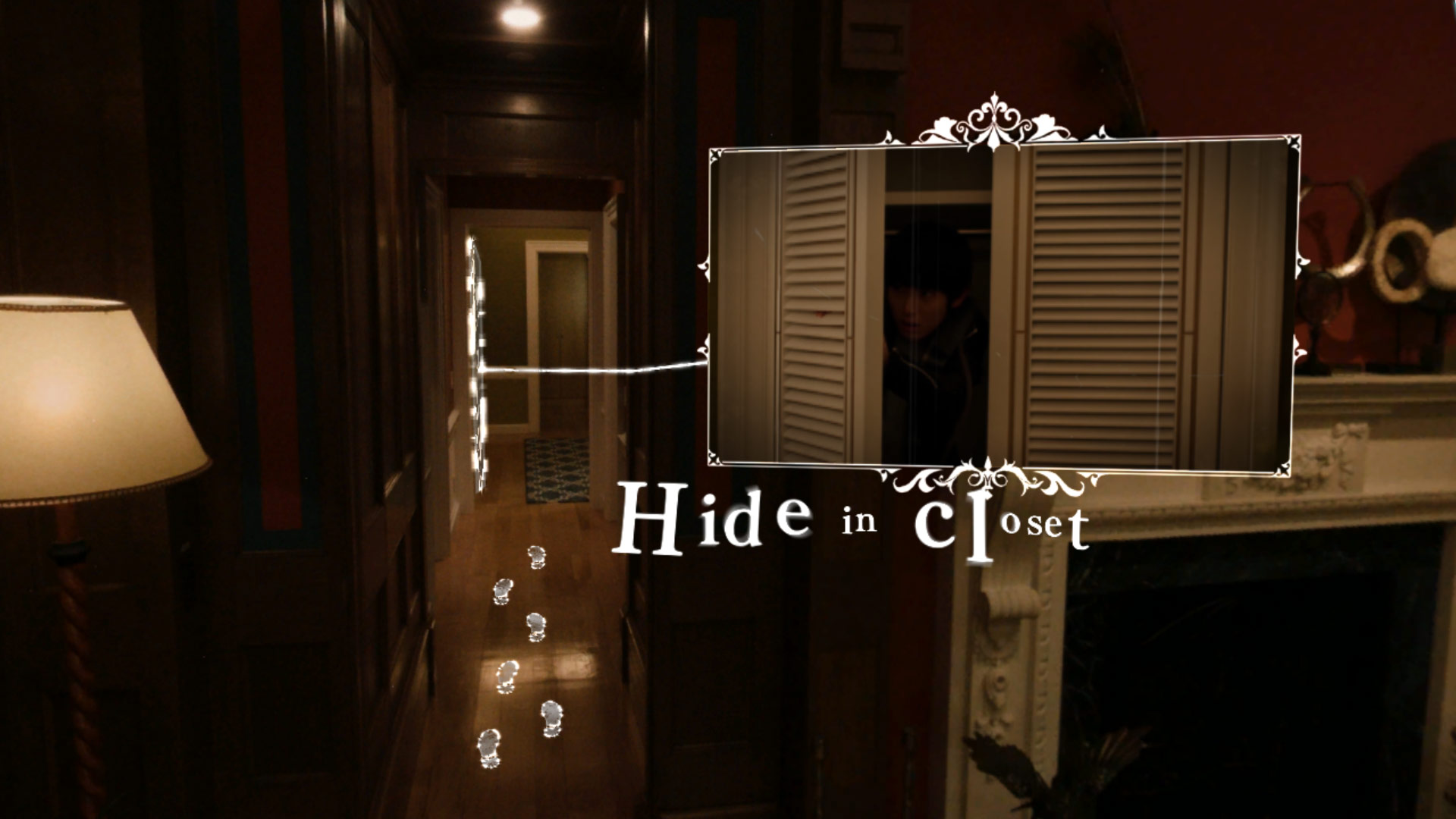Summary
- Death Come True is more interactive movie than actual game
- There are no branching paths, wrong decisions lead to immediate death, correct decisions continue the movie
- The story’s intriguing but short – roughly 2 hours not including extras
- I enjoyed it, but the price point ($15.99) makes it a bit hard to recommend unless you’re a Kodaka fan
Let’s talk about what Kazutaka Kodaka and Too Kyo Games’ Death Come True is not:
- It’s not a choose-your-own-
adventupath, choice-based, multiple branching paths game where your decisions matter. - It’s not 428: Shibuya Scramble.
In 428, Spike Chunsoft’s visual novel/movie mash-up, you play from the perspectives of several different characters at the same time, and choices lead to more choices, all kinds of wacky events, death, etc. A major part of the game is figuring out what specific decisions to make for each character so that they don’t get killed. The story is complex and longer than many novels: Steam clocks my playtime at 37 hours.
There are no branching paths here, just one main path until the last choice.
There’s a part of the game where the protaganist has to make some inferences about another character. Alas, making the wrong choice here has no penalty or consequences, other than the character going “no, that’s wrong”. This is the closest that you’ll get to any real interactivity (at least Danganronpa has you driving a car during these sequences, haha) or thinking involved to progress.
Somewhere in the distance, a rotary phone rings. It’s a wake-up call from the concierge, and you’re clearly in a fancy hotel somewhere. But you can’t seem to remember your name, why you’re here or anything else about yourself. So naturally you head to the bathroom, and whoa! There’s a body in the bathtub!
You stumble back into the room, and the TV news comes on with a picture of your face: whoa! You’re Makoto Karaki, the notorious serial killer wanted by the police!
And then there’s a knock on the door. It’s the police!
Do you open the door? Or open the door? (you only get one choice here)
You decide to open the door. The officer comes in and pokes around, finds the body in the bathroom and then shoots you! YOU HAVE DIED.
Normally, you’d be dead at this point, but thanks to the magic of time loops, you start the game over again, right as rain. But this time around, you know what’s going to happen, which opens up a new option: hide in the closet.
Thankfully, you’ll only go through a couple iterations of these time loops during the game (Endless Eight this ain’t). Combine this with the option of skipping ahead ten seconds during scenes, and the loops aren’t really a big deal.
Since this is primarily a story-based “game”, I’ve spoiler-tagged my thoughts on it below. As usual, click on any blurred text to reveal that section, or hit the toggle up top to reveal everything.
The non-spoiler version: I enjoyed the (short) story, but there’s certainly a lot of potential left unexplored. The section of the game that makes you think the story might be more layered than at first glance gets more or less instantly retconned [retroactive continuity: cancelling something that the narrative already established]. The whole time loop shtick doesn’t really matter and there’s also a good bit of hand-waving for major details.
The spoiler version:
If you’ve played the Danganronpa series, you can probably predict most of what happens in Death Come True, as this is discount Danganronpa 2 in a nutshell. The time loops happen because you’re actually a detective put into a VR simulation, trying to solve the death of your fellow cop girlfriend. The VR system aka “Come True” links up the brains and several people at once, alive or dead, and creates a virtual world based on the memories of the participants.
So you enter the simulation as the good guy cop, but once inside, you take the point of view of the notorious serial killer, Makoto Karaki. You go around trying to save yourself and your cop girlfriend – remember, she’s dead in the real world but here she’s alive – and try to figure out who was responsible for her death and the death of the serial killer. You get into a final confrontation with Mr. Bad Guy – who’s another cop that was taking bribes to solve crimes – and for the last choice, you can decide whether to stay in the simulated world or leave.
First is how the super detective bad guy is also apparently a super hacker as well, which causes bugs to happen in the simulation and also causes you to lose your memory. The bad-guy-is-also-a-hacker trope has always felt cheap and hand-wavy to me, since it solves any kind of tech problem: “oh, he’s a hacker, so he just made the computer explode”. In this case, the hacker causes your character to lose his memory and the game just brushes that detail aside.
Oh, and the super detective-hacker bad guy can also become the Saw movie villain at will. Like he goes around the hotel looking like Bane with a chainsaw (or samurai sword), killing the guests. What?
Second, there’s a part where your character starts to have doubts about being in a VR simulation and ends up as a patient in a hospital. But the game literally retcons this scene half-way through by adding all these bugs and artifacts and weird graphics, so you know that you’re still in the simulation. It’s a huge wasted opportunity. Like, what’s the point?
Third, how is this super detective guy hacking the system? And why doesn’t the company in charge of the system (which is in beta of course), I dunno, take the goddamn thing offline? Why is the hacker the smartest guy in the room when this company has a world-class VR platform? Are they staffed with interns?
All in all though, there’s still an engaging story to be found here (mostly on the strength of having actual actors) and I wasn’t bored for the three hours that I spent playing.
My first run through of Death Come True clocked in at 1 hour and 44 minutes. After going back and replaying it again to see the different death endings – which gives you medals that unlock other content – and checking out all of the behind-the-scenes videos, I spent around 3 hours total.

One of the behind-the-scenes shots. Thought this was interesting considering how simple this game is compared to 428 or the Zero Escape games.
As a value prospect, it’s tough to recommend Death Come True. I enjoyed it, but at $15.99, it’s a hard sell. I think it was Uchikoshi who commented on Twitter that they set the price based on how much movie tickets cost in Japan. That’s fine, but the experience of being in the movie theater commands a premium that I don’t believe this game deserves. If you aren’t interested specifically in Kodaka’s work, you’d be better off waiting for a sale.
Death Come True by Too Kyo Games is available for Nintendo Switch, iOS, Android, and PC. It retails for $15.99, except for the Android version which is a buck more expensive. Go figure.
Related Posts
You know a game's special when it requres a 37-page Google Doc to install.
After a surprise announcement earlier this year, the formidable classic Diablo II returns in remaste...
Genshin's latest patch brings more content, but not necessarily meaningful content.







[…] Izanagi Games’ and Too Kyo Games’ World’s End Club (formerly Death March Club) is officially out – but only on Apple Arcade. That’s a bit of a disappointment for us Android users, especially considering that the game’s Switch release date is Spring 2021. There’s also no mention of PC or any other consoles (unlike the other Too Kyo Game Death Come True). […]
[…] Fantasy XV (6.5)Death Come True (6.5)Dreamfall Chapters […]